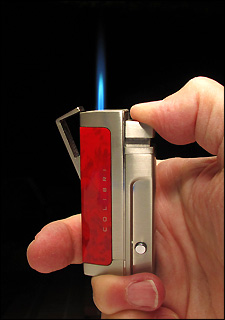 Cigar torch lighters are a finicky bunch. Like stubborn Jack Russell terriers, some seem to obey only when they feel like it. Upon publishing In Pursuit of the Perfect Cigar Lighter, some readers have requested a follow-up article about cigar lighter maintenance. So from my own personal experience with dozens of lighters, and conversations with knowledgeable B&M owners, please find below some tried and true tips on Keeping the Flame Alive.
Cigar torch lighters are a finicky bunch. Like stubborn Jack Russell terriers, some seem to obey only when they feel like it. Upon publishing In Pursuit of the Perfect Cigar Lighter, some readers have requested a follow-up article about cigar lighter maintenance. So from my own personal experience with dozens of lighters, and conversations with knowledgeable B&M owners, please find below some tried and true tips on Keeping the Flame Alive.
1) Use only multi-refined butane. This is as important as using the correct gasoline in your expensive sports car. Readily available at any B&M and online, multi-refined butane burns cleaner, and helps keep your torch’s nozzle from getting clogged.
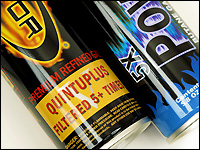
5X, the good stuff
A clogged nozzle is a death sentence for a torch lighter. Once clogged, the flow of butane gets restricted and the lighter will stop producing a flame. Even though a hissing sound can be heard, a contaminated nozzle diminishes the flow rate to the failure point. Once this happens, no amount of blowing, prodding, or praying will restore your lighter to its original performance level.
2) Protect your lighter from the elements. Don’t leave it outside overnight; don’t leave it in your hot/cold car, and keep it out of direct sunlight.
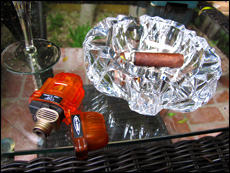
No way to treat a lighter
First of all, unlike cigars, torch lighters don’t like moisture. The nozzle needs to be dry to perform as condensation inside the nozzle can cause a misfire. The good news is that moisture doesn’t permanently ruin a lighter. Drying it even for a short period of time can cure this ailment. Secondly, butane performs best at room temperatures. My suggestion is to keep the lighter in a pocket between touchups. This keeps it dry and warm. Thirdly, don’t leave a lighter in a hot car. This is a ruinous environment for just about anything, including torch lighters. There are many plastic parts in the modern cigar lighter that can deform in the extreme heat of an enclosed, sun exposed, automobile. Even an expensive lighter can lose its good looks if warped by an overheated environment. Also, any prolonged sunlight exposure can harm a delicate torch lighter. And this is true even on a mild day. So I suggest not leaving your beloved lighter to “tan” in the sun.
3) Purging. Sometimes when filling our cigar lighters with butane, we inadvertently introduce air into the fuel tank, causing misfires and flameouts. If this happens, purging (bleeding) the lighter of trapped air is the remedy. There are many techniques to purging and some require emptying the lighter and using probes to depress the fueling valve. But there is a simple refueling technique that actually purges while refueling, resulting in good lighter performance with less lighter maintenance. Here we go:
With the lighter upside down and the butane canister directly above the lighter (it is very important that it not be at any angle above the lighter), quickly depress the canister down onto the lighter’s fuel intake valve. The empty lighter will begin filling immediately and will fill quickly.
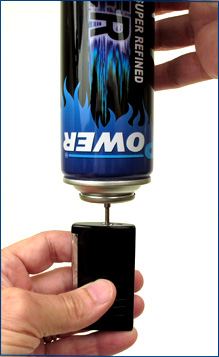
Good fueling posture is important
The lighter will then sputter as it reaches full capacity and eventually expel excess liquid butane from around the nozzle. At that point work the canister up and down a half dozen times in rapid succession. As you do, the fuel will spray and drip all over the place…this is a good thing. It is these rapid depressions that will simultaneously purge and refuel the lighter. Your lighter’s fuel tank will then be filled to capacity and only a small air bubble should be visible in the fuel level window.
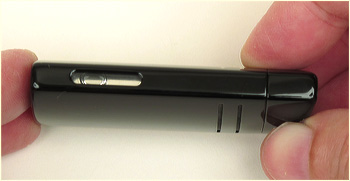
As good as it gets
But it’s important to emphasize that refueling your lighter is a messy job and if it’s not, then your lighter isn’t getting completely filled. If this practice is applied with each refuel, the lighter should perform well, provided it has a clean nozzle. BTW, liquid butane will not harm the finish of a lighter and any white residue is easily wiped off.
4) Let the lighter reach room temperature after refueling. My physics is a little rusty, but all the manufacturers state that a cold lighter doesn’t perform well and we should let them warm up after refueling (which makes them very cold, again, physics is not my thing). But I have learned that butane has a boiling point of 31 degrees Fahrenheit, which means that a lighter used in the cold weather will not work well at all. Butane will stay liquid below that temperature, so on that blustery day, that shirt pocket inside your coat is a warm and cozy place to keep your lighter.
5) Don’t store lighters with fuel in them. Over time, unused fuel that has been left in cigar lighters can get “funky” leading to poor performance. Additionally, Eric from The Big Easy Cigar Sanctuary says that some new lighters that are shipped by the manufacturer, and contain fuel, can have compromised performance. He suggests that if we buy a lighter and it doesn’t work well, send it back. Chances are it will never perform as desired so we should take advantage of any exchange policy before it expires. With this in mind, a cigar lighter we deem as bad, might simply need to be exchanged for another.
6) Clean the nozzle. Cigar lighters do a dirty job, in a dirty environment. So it stands to reason that things like lint and ash can contaminate the nozzle of a torch lighter.
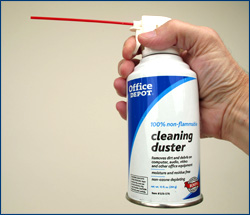
Keep your nozzle clear with canned air
A routine of blowing out debris from the nozzle is helpful to insure optimum performance of a lighter. The “canned air” that is sold at any office supply store is perfect for this. But it’s important to follow the safety rules written on the can. And never tilt it when blowing or fluid will spray all over your lighter. Not a good thing.
7) Adjust the flame…then leave it alone. Cigar lighters are simple devices and have very few moving parts. But one part that does move is better off left untouched. The flame level adjustment “wheel” is a nice feature but one that can wear out quickly. Once this happens our options become limited to either too much flame or too little. So my advice it to set it and forget it. (The practice of lowering the flame adjustment to refuel is one I don’t recommend, and find it to be unnecessary).
The Cigar Lighter Maintenance tips listed here should serve as useful guidelines for getting the most out of our lighters. If I’ve left anything out, please let me know in the comments section. Even a simple tip can be very useful.
Happy smokes,
Joe








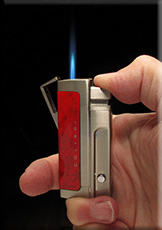

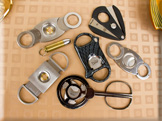

Thanks Joe, works perfect! Awesome.
This is a reply to comments posted on CigarAdvisor.com:
Going with your own personal experience is ALWAYS best. Each of us have our own unique way of doing things and our own instincts will guide us to what works best. This article was written from my own experiences and as an alternative to the printed material both in the lighter instructions and on the internet. Following the traditional methodes of purging and refueling will work just fine. But I’ve found that using the techniques in the article, my lighters out performed the traditional methodes of refueling and took much less time and hassle. And no, I was not putting you on! 🙂 I always fill till it spills.
I’ve also had butane canisters that had poor seals but by doing the “pumping thing” I was able to get the lighters filled. Also, over time, the seal seamed to get better. I think (I’m no expert) that butane builds up as solids in the neck of the canister valve. Allowing for a better fit over time.
It’s important to reiterate what I have learned from discussions with B&M owners that when lighters sit unused, they will, over time, lose their ability to perform. I own many lighters and have found this to be true. I’m now using only my best two lighters and so far, the daily use has kept them working like new.
Thanks for the clear reply – even though it goes against instinct and experience, I’m going to give your methods a solid try – there is absolutely still room for improvement!
Great! I’m VERY interested in what you come up with.
Joe,
I was one of your readers who requested the tips on keeping a lighter working properly. So, thanks for the tips. Admittedly, I hadn’t read these tips for a while – but for a pretty good reason. Back in September, I read your piece on the quest for the perfect lighter. And, as I posted back in September, I bought a S.T. Dupont Maxijet, simply on your recommendation. It is everything you’ve written that it would be! Now, would you believe, that after only two weeks. . . I lost it !!! I (still) can’t believe it myself. The only way, I could get the fact that I lost the best lighter that I ever purchased, off my mind, was to break-down an purchase another one. So, I haven’t had much need for “maintenance”, as this lighter, as you know, works first time every time. That’s not to say that I won’t take your maintenance tips to heart.
By the way. I have an Xikar I double guillotine cutter. I love(d) it as well. However, after about 3 months, it won’t open !! I will send it back for repair, but was wondering if you’ve experienced a similar problem with such cutters? I’ve “lubed” it, and cleaned it per the manufacturer’s instructions (even before I had the problem). Also, I’ve been opening the head of my cigars while they’re still in the cello (I think I read that tip on your site as well). Supposedly, cutting the head while still in the cello helps keep the cutter’s blades sharp (prevents wear), and (I think) is supposed to prevent lose bits of tobacco from jaming the scissor action. Despite this technique, the cutter still jammed!
Thoughts?
And,, thanks again for the S.T. Dupont recommendation.
Regards,
Charlie I.
aka 8 0 1 1
Hey Charlie,
Sorry to hear about your Maxijet. That’s a big loss in my book.
I’ve never had a stuck guillotine cutter so I can’t give you any new insight. Sounds like you’re trying good remedies. The good news is they are cheap to replace. Also, I’ve not heard of cutting a cigar while in the cello so that tip is someone elses.
But keep the faith and maybe your lighter will show up.
Happy smokes,
Arthur
I just read the last post from someone that has problems with their Xikar cutter. I have always used Xikar cutters (never guillotine style) but I do know that Xikar will stand behind their cutters 100%. To me for the cost they make the finest cutters in the world. Also I have always used Colibri lighters and have many. Unfortunately most of them don’t work anymore, so I have also gone to Xikar lighters and so far they have worked flawlessly!
Also like their cutters their lighters have a “lifetime” guarantee. Colibri does not!
I am also having problems with two lighters, a Dupont Xtend and a Z-plus torch insert for a Zippo. Both won’t stay lit. I researched a bunch of articles on lighter maintenance; most say about the same (or exactly the same!) as you have. I have done all the suggestions, purged, blew, refueled etc. Still no joy. So in my continuing quest for solutions, here are two questions: 1) can fuel go stale in the can? I’m using Dupont Xtend fuel, but I’ve had it a while – and it does seem to work fine in my el Cheapo lighter. 2) After you go through the purging process until there is no discernable pressure left in the lighter, WHAT is in the fuel tank of the lighter? It’s not a vacuum, right? So it must be either air or butane, or a combination of both. Why do we assume all the air is out? Could not the tank that is empty of any liquid fuel be full of air? I don’t get it. Please help me understand the theory behind the purging process. Thanks.
Mike, I feel your pain. Keeping lighters working properly is difficult. But I’ve found that following the guidelines in my article is the best way to keep things working.
I’m surprise to hear that your Dupont isn’t doing well. Mine is the most reliable of all my lighters. But to get to your questions:
1 – Yes, I believe that butane goes bad over time. If your can is old, chuck it. Butane is cheap, but remember to use only quintuple refined fuel.
2 – If you purge all the fuel from a lighter, what you are left with is unpressurized air. Kind of like a jar with the lid off.
I never wait till the fuel is completely spent from my lighters. I know this goes against what everyone says, but it works best for me to refuel before the lighter gets empty. By using my “pumping” fueling method, I get the best flame. Pumping does a great job of purging air from the lighters tank.
Good luck,
Joe
I have a ST Dupont lighter linge 2 that uses the gold refill canisters, it’s almost like my lighter isn’t “opening” the canisters all the time, I screw them on and then nothing happens, when i unscrew them….no gas is even leaking out. Suggestions would be great because now I have a very expensive paperweight!
Thanks in advance,
Adam
Adam, I’m sorry about your Linge 2 lighter…they are works of functional art. Unfortunately, I don’t own one and can’t give you any advice regarding its repair. But I know Dupont has a repair service. I suggest you contact them. They may be able to help you.
Joe
Thanks for the article. Good advise. Good fuel is the key. I have found it very instructional to get a plastic lighter with a transparent fuel tank. It will probably have a natural flame instead of a torch flame. Watch what happens when you bleed it with just a little bit of fuel left. The butane boils off, but eventually the flow will stop with some butane left in the tank. Fuel it up and you will see just how quickly a lighter fills. The first pump usually fills the tank to 80 percent full. An additional squirt or two will bring it to 99.8 percent full. There is always a tiny air bubble, as you pointed out. Also, if you find butane squirting all over the place outside the lighter when fueling, you are doing it wrong. Make sure the nozzle of the fuel can fits over the fueling port on your lighter. Make sure the can and lighter are aligned properly. Calmly, but quickly depress the fuel can down into the lighter while keeping them aligned. If the angle changes fuel will spurt out.
I cringed a little bit when I read the part about “This is as important as using high-octane gasoline in your expensive sports car.”
High-octane gas has nothing to do with being “triple refined” or whatever. In fact, it can be detrimental to your car’s motor to use a high-octane fuel if the motor has not been designed for it. Many “expensive sports cars” don’t have a high-compression motor that necessitates the higher octane fuel.
Thanks for the clarification. I’ll reword that sentence. And thanks for reading Robustojoe.com.
I purchased two XIKAR 525BL Tech jet LIghters. Seems like I’m constantly having them replaced since they have a lifetime warranty. Last time I went into the cigar lounge to have them return it due to the flame too low or just a quick flare…again….a guy took a small screwdriver and did something between the flame wheel and lighter.
After that, it worked but he wouldn’t say what he did!. I was looking at a different XIKAR lighter on display because they said it was better for the outdoors. It was doing the same thing mine was doing and the guy made it work doing the same thing. Prying the flame wheel and doing something. I noticed my two lighters flame wheels have a Philips head screw that no doubt tightens the wheel against a stem. He didn’t seem to loosen that before prying. Any idea what he’s doing? It did make both lighters work.
I hope you send an email back as well as posting.
Hi Kurt. I don’t know what that guy did, but I once had a torch lighter that never got a flame tall enough to light a cigar. The clerk at the store took the lighter apart, and removed the governor that kept the flame from getting too high. This worked for a while, but ultimately, the lighter stopped working completely. In my experience, all inexpensive lighters don’t last long. The flame becomes unreliable, or gradually diminishes in power. The only pocket lighter I use now is the S.T. Dupont MaxiJet. It’s expensive, but worth the money. It produces a powerful flame, and never fails to light. Plus, it’s got a big tank and can last a few days of heavy useage. Here’s an article.
I had a Vector, which I have had for about 6+ years and was my favorite, that started not holding a flame. i tried the purging and blowing out the nozzles, but it still wouldn’t work. I was fortunate that I could take the case off via three screws and inspect the lighter. I found one of the tubes from the tank to the nozzles wasn’t on tight. I was able too seat the tube using tweezers and now it works fine. If you can’t don’t want to send a problem lighter in, I recommend at least giving the inside an inspection–with due care (bleed it empty first).
I had one nozzle of a dual nozzle lighter that was clogged. I tried the canned air trick and now it works great!! Thank you so much!!!
So glad that worked! Are you using multi-refined butane? That helps keep the nozzles clear.
That’s exactly what I am looking for. Thanks for sharing this post. Anyways, I’m looking for an adapter for an old style pipe lighter. Any suggestion or know where I can buy them? Thanks!
This is a great article by robusto joe!
An oldie, but goodie!
Just “breathed” new life into a couple of my torches based on Joe’s advice.
So glad this article was useful. Ultra refined butane is the key!